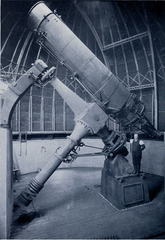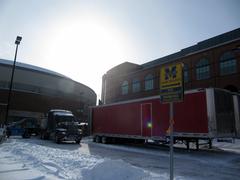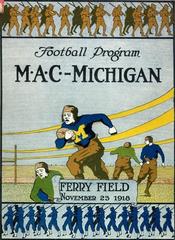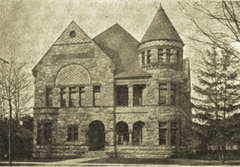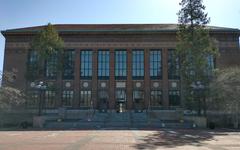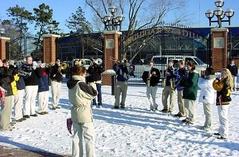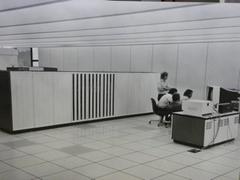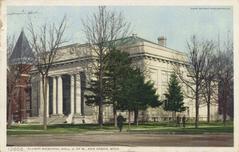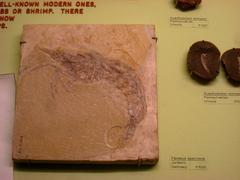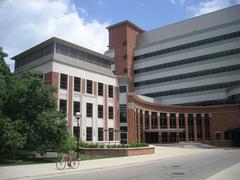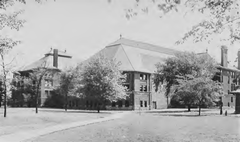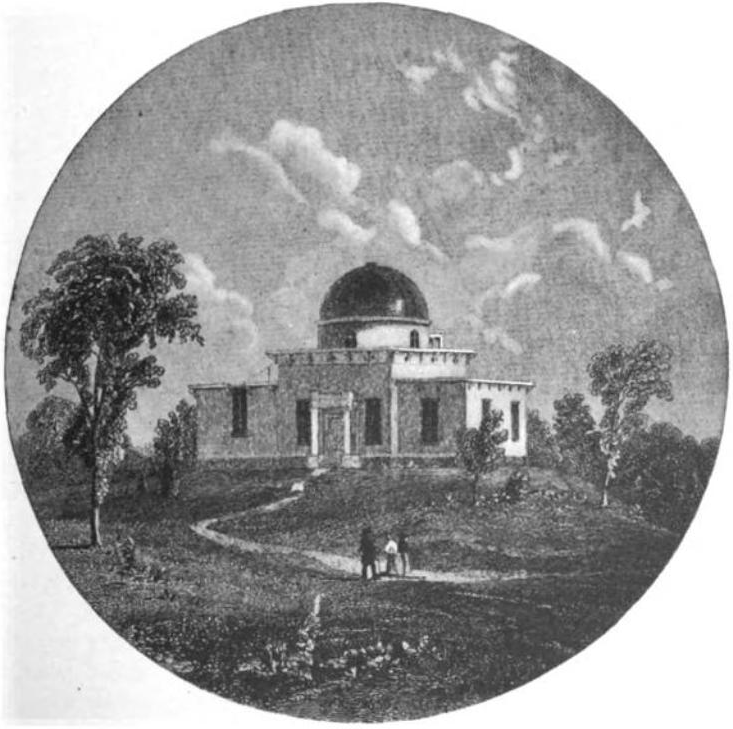
Detroit Observatory Visiting Hours, Tickets, and Complete Guide to Ann Arbor’s Historic Landmark
Date: 15/06/2025
Introduction
The Detroit Observatory in Ann Arbor, Michigan, is a cornerstone of American astronomical heritage and a leading example of historic preservation and public science education. Established in 1854 and now operated by the University of Michigan’s Bentley Historical Library, this site offers visitors an immersive journey through 19th-century scientific discovery, featuring one of the oldest operational refracting telescopes in the United States. This detailed guide covers the observatory’s history, architecture, scientific contributions, and all practical information you need—including visiting hours, ticketing, accessibility, tours, and nearby attractions—to plan an unforgettable visit.
Table of Contents
- Historical Overview
- Architectural Features and Site Layout
- Visitor Information
- Unique Features and Visitor Experience
- Tips for a Memorable Visit
- Nearby Attractions
- Frequently Asked Questions (FAQ)
- Conclusion and Recommendations
- Sources and Further Reading
Historical Overview
Founding and Early Years (1852–1900)
The Detroit Observatory was established in 1852, with construction completed in 1854, as the University of Michigan’s first scientific research facility (Detroit Observatory History). Under the leadership of President Henry Philip Tappan and with significant support from Detroit businessman Henry N. Walker, the observatory signaled the university’s commitment to scientific advancement and education. Its original 12⅝-inch Henry Fitz refracting telescope was among the world’s largest at the time, setting a new standard for American astronomical observatories (AADL).
Scientific Achievements and Notable Figures
The observatory’s first director, Franz Brünnow, established rigorous standards for astronomical measurement and instruction, earning international recognition. His successor, James Craig Watson, discovered 22 asteroids between 1863 and 1877, underscoring the observatory’s impact on planetary science (NASA Asteroid Discoveries). Another notable figure, Asaph Hall, began his astronomical career here before discovering the moons of Mars. The observatory also contributed to regional timekeeping, with “Detroit Observatory time” adopted by railroads and local businesses.
Expansion and Preservation (1900–Present)
In the early 20th century, the observatory expanded its research capability with the addition of the Repsold meridian circle telescope (Detroit Observatory Instruments). Although research activities waned mid-century due to technological advances and urban light pollution, the site’s historic value led to its listing on the National Register of Historic Places in 1973 (National Register Listing). Restoration efforts in the late 1990s and a major renovation in 2022 have preserved the observatory’s architecture and scientific instruments, transforming it into a vibrant museum and public education center (Detroit Observatory Renovation).
Architectural Features and Site Layout
The Detroit Observatory blends Greek Revival and Italianate architectural styles, with a 40-foot-diameter central dome constructed of wood and copper. The revolving dome, operated manually, houses the historic Fitz refractor. Flanking wings originally served as offices and research rooms. The meridian room contains the Repsold meridian circle telescope, historically used for precise timekeeping and celestial measurement. The grounds have been landscaped to reflect the observatory’s original 19th-century appearance, with accessible pathways and interpretive signage enhancing the visitor experience (Detroit Observatory Visitor Information).
Visitor Information
Visiting Hours and Admission
- Typical Hours: Thursday–Sunday, 12 PM–5 PM.
- Evening Events: Public viewing nights, often the first Friday of each month, from dusk to 10 PM (weather permitting).
- Special Events: Additional evening programs or lectures may be scheduled.
- Admission: Free for general entry; donations are encouraged to support preservation and educational outreach (Official Website).
Tickets and Reservations
- Public Events: Free tickets are required for entry into the main dome during viewing nights and can be reserved in advance online or picked up on-site (first-come, first-served). Early reservations are recommended for popular events (WEMU News).
- Group Tours: Arrange in advance through the University of Michigan’s Bentley Historical Library.
Accessibility
- The observatory is fully wheelchair accessible, with ramps, accessible restrooms, and staff available to assist visitors with disabilities. Due to the building’s historic nature, some areas may have limited access—advance notice is appreciated for special accommodations.
Guided Tours and Special Events
- Guided Tours: Offered several days a week and during public events, tours last 60–90 minutes and highlight the observatory’s history, architecture, and scientific instruments.
- Special Programs: Astronomy nights, workshops, lectures, and family-friendly events are scheduled year-round. Check the official events calendar for up-to-date information.
Unique Features and Visitor Experience
- Historic Fitz Refracting Telescope: Still operational and available for public use during viewing nights, offering a rare hands-on experience with a 19th-century astronomical instrument (AADL).
- Meridian Circle Display: Demonstrates early timekeeping and navigation techniques.
- Interpretive Exhibits: Oakwood cases display early scientific instruments, rare astronomy books, and artifacts from the observatory’s storied past (WEMU News).
- Photographic Opportunities: The observatory’s dome and grounds are especially striking at sunset and provide excellent backdrops for photography.
- Gift Shop: Offers astronomy-themed souvenirs, educational materials, and books.
Tips for a Memorable Visit
- Check the Weather: Clear skies are essential for viewing nights.
- Reserve Early: Space is limited for dome entry and popular events.
- Dress in Layers: Evening temperatures may be cool; comfortable shoes are recommended.
- Engage with Staff: Docents and astronomers provide valuable insights and encourage questions.
- Photography: Non-flash photography is allowed; check with staff about equipment restrictions.
- Combine Visits: Nearby attractions include the University of Michigan Museum of Natural History and Nichols Arboretum—perfect for rounding out your Ann Arbor experience (GPSmyCity).
Nearby Attractions
- University of Michigan Museum of Natural History: Interactive science exhibits and fossil displays.
- Nichols Arboretum: Walking trails and gardens ideal for nature lovers.
- Ann Arbor Hands-On Museum: Family-friendly science exploration.
- Law Quadrangle and Central Campus: Architectural highlights within walking distance.
Frequently Asked Questions (FAQ)
Q: What are the Detroit Observatory visiting hours?
A: Thursday–Sunday, 12 PM–5 PM for general visits; monthly evening viewing nights are also scheduled.
Q: Is there an admission fee?
A: No, admission is free; donations are appreciated.
Q: Are guided tours available?
A: Yes, guided tours are offered several days a week and during special events; reservations are recommended.
Q: How do I get Detroit Observatory tickets?
A: Reserve free tickets online via the official website or pick them up on-site during events.
Q: Is the Detroit Observatory wheelchair accessible?
A: Yes, with ramps and accessible restrooms. Some historic areas may have limited access—contact staff in advance for accommodations.
Q: Can I bring my group or class?
A: Yes, group visits (including schools and community organizations) can be arranged in advance.
Q: Is photography allowed?
A: Non-flash photography is permitted; professional equipment may require prior approval.
Conclusion and Recommendations
The Detroit Observatory is a living testament to scientific innovation and public education in Ann Arbor. Its careful restoration and ongoing programming ensure that visitors of all ages can experience the wonder of astronomy and the legacy of American scientific achievement. With free admission, accessible facilities, and a calendar packed with engaging events, the observatory is a must-visit for history and science lovers alike. Plan your visit by consulting the official Detroit Observatory website, reserve your tickets in advance, and explore more of Ann Arbor’s rich historical landscape during your stay.
For an enhanced experience, download the Audiala app for guided audio tours and follow the Detroit Observatory on social media for updates and event notifications.

